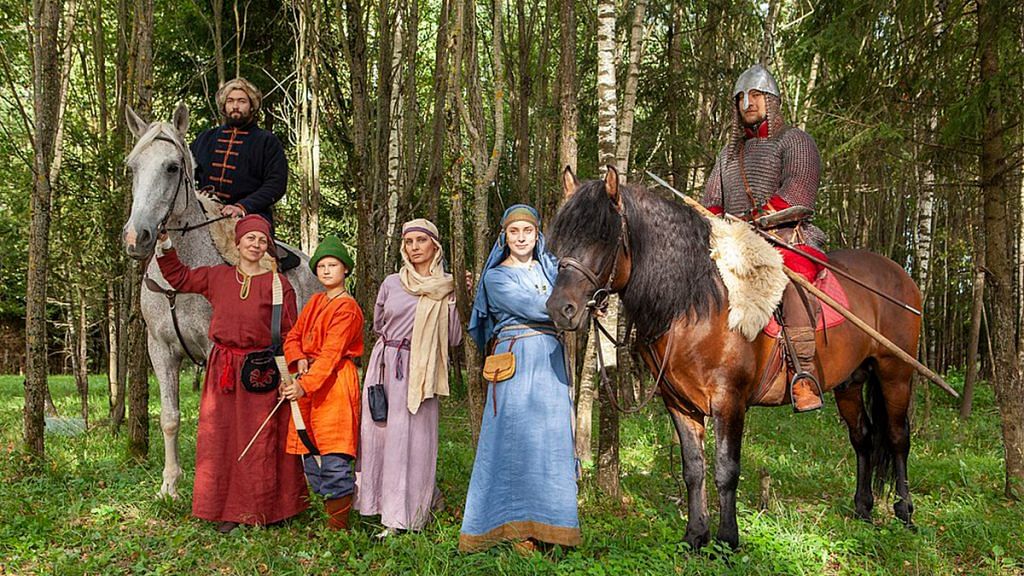Bengaluru: An international collaboration of over 100 scientists and geneticists have traced the genetic origin of modern domestic horse, the Equus caballus, to Russia.
The research narrows the location of horse domestication the steppes of Western Europe, where the Volga and Don rivers intersect, to 4,200 years ago from where and when horses spread to the rest of the world.
The study was led by molecular archaeologist Ludovic Orlando at University of Paul Sabatier in Toulouse, France. Genetic analysis was performed on 273 reconstructed ancient horse genomes from fossils of ancient horses found in various parts of Europe and Asia.
The team further identified two genes in horses, the GSDMC and ZFPM1 genes, which provided modern horses locomotive and behavioral adaptations that helped with horse-back riding and domestication.
The research is thought to be the most comprehensive analysis of available genetic data and the findings were authored by 162 researchers. The paper was published in the journal Nature this week.
Historical evolution of horses
The Bronze Age spread through Europe and Asia between 5,000 and 4,000 years ago, which is when writing systems, pottery, codified law, city-states, warfare, and agriculture came into existence in human society.
Analysis of human genomes from this era has previously revealed a massive expansion and spreading out of population from the Western Eurasian steppes into the regions of Central and Eastern Europe in around the 3rd millennium BCE. Historical records also indicate a rapid expansion in the population of horses across Eurasia at this time.
This is also the time period where horse ancestors that roamed grasslands in North America came over to Asia by crossing over the fully frozen Bering land bridge.
Based on their findings, the authors write that the people who lived in the region where the Volga and Don rivers intersect, bred horses, which moved along with humans.
However, researchers also identify other species of horse that were domesticated in pockets, whose populations were eventually replaced by horses that came from this region, called the DOM2 horses as they spread out in the second millennium, around 2200 BCE.
The journey of horses and humans is traced together with equestrian culture, which shows expansion of objects like spoke-wheeled chariots.
Also read: 85% world population inhabit areas directly affected by human-induced climate change, study says
Four horse species discovered
Horse ancestors are thought to have roamed the grasslands in North America, and came over to Asia by crossing over the fully frozen Bering land bridge before the Bronze Age.
To the early days of the Bronze Age, four lineages of horses were identified. One lineage was traced to a different species called Equus lenensis, which existed in northeastern Siberia. A second lineage was spread out over the western parts of Europe. A third lived in the Urals, while the fourth, the DOM2, lived in the Western Eurasian steppes.
Genetic analyses traced the DOM2 to have originated in the region where the Volga and the Don rivers intersected, and where the existing human population domesticated these horses for specific genes by breeding. The DOM2 horses eventually replaced the populations of other native horses thanks to favourable genetics that allowed them to live with humans.
The authors used data about the analysis of human expansion and compared the expansion of the modern horse genome with it.
From bones of horses buried with spoke-wheeled chariots during around 2000 BCE, authors surmised them to be of the DOM2 horses. Such horses were also found in Central Anatolia; visual representations from about 1900 BCE are available. They also identified other geographic regions where the horses pre-dated chariots, indicating that horseback riding spread before chariots.
The two genes identified indicated key behaviours that humans bred horses for — the GSDMC gene is responsible for a strong spine, back, and gait, while the ZFPM1 gene is involved in mood regulation and aggression. The combination of the genes indicated that horses were bred to be more mobile, including being able to run long distances and bear weight, and also to be more docile to be able to live and work alongside humans.
Language expansion
The findings finally provide an answer to extensive debates about the origins and the spread of modern domestic horses.
Along with horses, the research also explains the evolution of two family of languages as different groups of peoples spread across Eurasia.
All European languages have evolved from the hypothetical Proto-Indo-European (PIE) language, which then has sub-families of languages. In the Indo-Iranian group of languages, which consists of languages spoken in the Persian region and in northern India, there is an extensive vocabulary for horse- and equestrian culture-related words, while the earlier parent PIE language has a sparse vocabulary for equine words.
“We thus conclude that the new package of chariotry and improved breed of horses, including chestnut coat colouration documented both linguistically and genetically, transformed Eurasian Bronze Age societies globally within a few centuries after about 2000 BC,” write the authors.
(Edited by Paramita Ghosh)
Also read: Astronomers discover first planet that survived its star’s death, still orbits white dwarf
